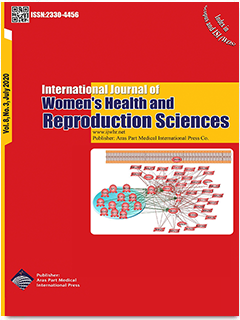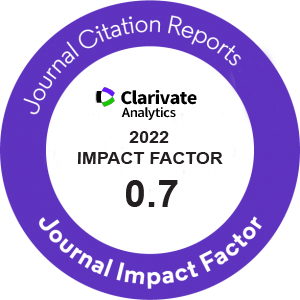| Original Article | |
| Agonist Versus Antagonist in Intracytoplasmic Sperm Injection Cycles: Which Is the Best? | |
| Bushra J. Al-Mousawi1, Maanee A.H. Al-Azzam1, Balsam Al-Zahawi1, Hayder A. Fawzi2 | |
| 1Reproductive Medical Center of Fertility and in vitro fertilization, Kamal AL-Samaria Hospital, Baghdad, Iraq 2Department of Pharmacy, Al-Rasheed University College, Ministry of Higher Education and Scientific Research, Baghdad, Iraq |
|
|
IJWHR 2020; 8: 285-289 DOI: 10.15296/ijwhr.2020.46 Viewed : 2391 times Downloaded : 1829 times. Keywords : GnRH agonist, GnRH antagonist, Pregnancy rate, In vitro fertilization, ICSI |
|
| Full Text(PDF) | Related Articles | |
| Abstract | |
Objectives: The comparison of gonadotropin-releasing hormone (GnRH) agonist against GnRH antagonists regarding the pregnancy rate and effect of various predictors on pregnancy outcomes. Materials and Methods: This prospective comparative study involved 189 women who underwent intracytoplasmic sperm injection (ICSI) cycles and were divided into agonist (107 patients) and antagonist arm (82 patients) groups. The chemical and clinical pregnancy rate was the main outcome and the other outcomes included the number and quality of oocyte measurement and pregnancy outcomes. Results: Based on the results, the agonist protocol showed a higher rate of pregnancy (32.7%, 95% CI: 23.9-42.4%) compared to the antagonist protocol (22.0%, 95% confidence interval (CI): 13.6-32.5%) with the odds ratio (OR) of (95% CI) = 1.73 (0.89-3.35). The results further revealed that the count of retrieved oocytes, count of M2 oocytes, count of fertilized oocytes, count of embryos, and the fertilization percent out of total retrieved oocytes were higher in the agonist arm compared to the antagonist arm . In the multivariate analysis after adjusting for the confounders, the agonist protocol had higher odds of a successful pregnancy compared to the antagonist protocol by 57% (partial OR = 1.57, P value = 0.23). Conclusions: In general, the agonist protocol offers a favourable outcome in comparison to the antagonist arm, and there seems to be an intrinsic benefit for the agonist protocol, which is not explained by the higher number of transferred embryos. |
Cite By, Google Scholar
Google Scholar
PubMed
Online Submission System
 IJWHR ENDNOTE ® Style
IJWHR ENDNOTE ® Style
 Tutorials
Tutorials
 Publication Charge
Women's Reproductive Health Research Center
About Journal
Publication Charge
Women's Reproductive Health Research Center
About Journal
Aras Part Medical International Press Editor-in-Chief
Arash Khaki
Mertihan Kurdoglu Deputy Editor
Zafer Akan























